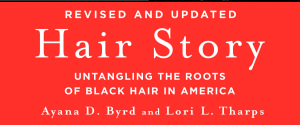I originally wrote this post about head lice and mixed race hair in 2007, but it still rings true today. And as we get ready to go back to school, I’m still curious about head lice and the one-drop rule.
The kids are ready to go back back to school and so we begin a new year of homework, field trips, birthday parties and my favorite, the onslaught of communicable diseases that my children seem to love to bring home! The one common elementary school infestation that I dread the most is head lice. Eww! Just writing the words makes me itch. But here’s the thing, my paranoia and fear about finding white creepy crawlies in my kids’ hair is tempered with my fervent hope that their hair is “Black” enough to repel the heinous little buggers.
Black Hair and Head Lice
I mean everybody knows that Black people can’t get lice, right? No really, I wrote a book about Black hair and I did the research. Let me explain. It’s not that Black people CAN’T get lice, it’s just that the North American head louse has adapted to Caucasian hair and can’t really navigate the shape of African-American hair follicles. Can you say I’m happy to be nappy? If you go to Africa, or even Brazil however, those bad boys are all over Black hair.
Here’s a recent statistic I found:
“According to Andrea Beth Trowers, MD, of the University of Miami, African-American children are much less likely to have head lice (medically called pediculosis capitis) than white or Hispanic children.”
Head Lice and Mixed Hair
Now, here’s where I had my meltingpot meltdown. These kind of stats don’t take into consideration mixed kids like mine. I hate to break my kids down into racial categories for any reason, but when it comes to combating parasites on their head, I’ll do it. So, I’m trying to figure out just how Black they have to be, or rather how Black their hair has to be to be truly unwelcoming for the North American head louse to take up residence. And of course my SpaNegro children have three distinct hair textures, one being much kinkier than the other two.
I’m not one to wait around and see if the one-drop rule is respected by head lice, so I will take action. As soon as the cold weather hits and the hats and scarves come out (aka prime lice season), my kids will have their hair greased up good (because lice can’t get their claws into a slippery head). I’ll switch to coconut-based shampoos (because supposedly lice hate the smell of coconut. Even if that’s not true, I love coconut so that’s no big sacrifice). And mostly, I’ll pray that I’ve passed enough of my kinky genes on to them that they will be spared the itchiness of the louse.
A New Lesson for Black Moms with Mixed Kids
Anybody out there with Mixed Hair have an opinion on head lice? I’d love to hear it. Do you feel safe from the lice epidemics because of your racial makeup? Do tell. Isn’t it interesting how being mixed can obliterate so many of the things we mono-racial folks just take for granted? As a Black mother to mixed kids, I am constantly surprised by the things I have to relearn. I believe it’s a good thing though to have your assumptions and ideas confronted by a different truth. Wouldn’t you agree?
Peace.


Comments
2 responses to “Do Head Lice Respect the One-Drop Rule?”
I am a non-mixed 4B (kinky-curly) haired Black person, so I can’t offer advice from the mixed perspective. But I’ve always theorized that Black people don’t tend to get head lice because we’ve typically have always regularly put chemicals (straighteners) or intense heat (hot comb straightening) on our hair. As such, I thought that would kill any lice, if by chance we were exposed to them. Since the women were usually doing that, then the black men they were with likely wouldn’t be getting it either. Of course, the “catching lice from a Significant Other” thing may be complicated if they’re with someone with has naturally straight (or non-need to modify with heat or chemicals) type hair. In a related way, if Black people had family members and close friends of the same race (by close friends, meaning people you tend to be physically closer to and/or borrowing clothing or other items), then you wouldn’t be getting lice from them either, in theory.
I never thought about lice could still be in African and Brazil hair – as you pointed out, though. I also didn’t know that hair kinkiness was a possible “protection” from lice, as you state, but I guess it’s possible. So, a question could be, do/can people with dreadlocks get head lice? Since they are not modifying their hair with heat nor chemicals and the locked hair is in a very kinky state/format. Or as a possible experiment: If people with locks are exposed to head lice, do they catch the lice too? – then I guess the kinkiness of the hair is not a protection. Also, relatedly, with the newer natural hair movement among Black women, is head lice becoming an emerging issue among them? But, I guess the locked or naturals would need exposure to the lice 1st in order to determine. But, I think finding out the result to either of those issues would answer your question.
Shuggie,
Thanks for your comments. I’m praying that my dreadlocks make my head inhospitable to head lice. But I’m sure there’s always a first time. I’ve warned my boys if they bring lice home, they get their heads shaved. I’d prolly shave my own head too 🙁